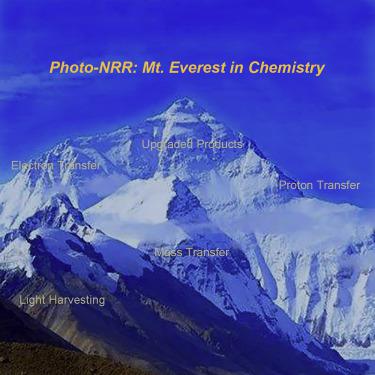Chem ( IF 19.1 ) Pub Date : 2020-11-30 , DOI: 10.1016/j.chempr.2020.11.002 Shu-Lin Meng , Xu-Bing Li , Chen-Ho Tung , Li-Zhu Wu

|
Artificial photosynthetic nitrogen reduction reaction (photo-NRR) represents a more sustainable strategy beyond Haber-Bosch chemistry for N2 fixation. Overcoming the kinetic challenges to activate insoluble and inert N2 under ambient conditions for multi-electron and proton processes is the key to photo-NRR. Inspired by the effective N2 fixation in nitrogenase, the elemental composition, structure, and electronics of FeMo-cofactor (FeMo-co) active center in MoFe protein have stimulated the exploration of artificial catalysts in homogeneous transition metal complexes and heterogeneous materials. To initiate effective solar-to-NH3 conversion, these catalysts should be intimately coupled with more specialized photosensitizers in proximity to guarantee continuous and unidirectional multi-electron transfer, and the catalytic environment should be better defined and optimized to modulate N2 and proton transfer kinetics. In the next decade, photo-NRR will progress from proof-of-concept discoveries to more effective solar-to-chemical conversions, and the opportunity of implementing upgraded N2-to-chemical conversions will also be presented by artificial photosynthesis.
中文翻译:

固氮酶启发人工光合固氮
人工光合氮还原反应 (photo-NRR) 代表了一种比 Haber-Bosch 化学更可持续的 N 2固定策略。对于多电子和质子过程,克服在环境条件下激活不溶性和惰性 N 2的动力学挑战是光 NRR 的关键。受固氮酶中有效的 N 2固定的启发,MoFe 蛋白质中 FeMo-辅因子 (FeMo-co) 活性中心的元素组成、结构和电子学激发了对均质过渡金属配合物和异质材料中人工催化剂的探索。启动有效的太阳能制 NH 3在转化过程中,这些催化剂应与附近更专业的光敏剂紧密结合,以保证连续和单向的多电子转移,并且应更好地定义和优化催化环境以调节 N 2和质子转移动力学。在接下来的十年中,photo-NRR 将从概念验证发现进展到更有效的太阳能到化学转化,并且人工光合作用也将提供实施升级的 N 2到化学转化的机会。











































 京公网安备 11010802027423号
京公网安备 11010802027423号